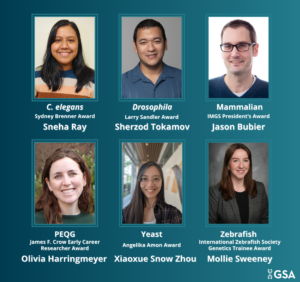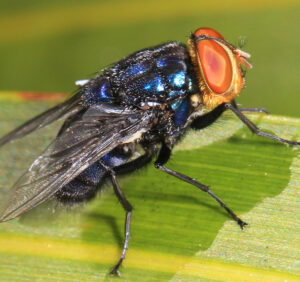Enter your address to receive notifications about new posts to your email.
Articles tagged C. elegans
(42 results)
-
Science & Publishing
A tail of three regulatory elements: insights into the structure of C. elegans Raf/LIN-25
A new paper in GENETICS shows the distal tail segment Raf/LIN-45 downregulates signaling and models its function in other Raf proteins.
-
Meet embGAN, a revolution for cell lineage studies
New research in GENETICS reports an automated pipeline for cell lineage tracing that massively reduces manual analysis time.
-
Science & Publishing
P. pacificus’s epigenetic toolkit is missing an important tool
A GENETICS study’s insight into Pristionchus pacificus’s epigenetic landscape makes a remarkable discovery about a critical methyltransferase.
-
Science & Publishing
New Senior Editor Amy MacQueen joins GENETICS
A new senior editor is joining GENETICS in the Genome Integrity and Transmission section. We’re excited to welcome Amy MacQueen to the editorial team.
-
Science & Publishing
New associate editor, Carolyn Phillips, joins GENETICS
A new associate editor is joining GENETICS in the Gene Expression section. We’re excited to welcome Carolyn Phillips to the editorial team.
-
A young professor shaping how to study and communicate chromosome dynamics
2024 Genetics Society of America Early Career Medal recipient Ofer Rog pursues a mechanistic understanding of chromosome structure and function during meiosis.
-
The worm whisperer: One scientist’s journey into understanding worms
2024 Thomas Hunt Morgan Medal recipient Paul Sternberg’s decades-long discoveries in worm physiology, development, and behavior addressed fundamental mysteries in evolutionary biology, genetics, and systems neuroscience.
-
News
TAGC 2024 Early Career Award Winners
GSA is pleased to announce the winners of the early career awards presented at The Allied Genetics Conference 2024. These awards are specific to particular TAGC communities and recognize early career scientists’ outstanding work on their respective research organisms. The awardees will present their talks in keynote sessions at TAGC 2024. Don’t miss the opportunity…
-
Science & Publishing
New editor, Chun-Liang Pan, joins GENETICS
A new associate editor is joining GENETICS. We’re excited to welcome Chun-Liang Pan to the editorial team. Chun-Liang PanAssociate Editor Chun-Liang Pan is a Distinguished Professor at the Institute of Molecular Medicine, National Taiwan University (NTU), in Taipei, Taiwan. He received an MD and completed residency in clinical neurology at NTU, and then obtained a…
-
Genetic tools for pest, parasite, and disease vector control
This article is part of a series of posts outlining the history and impact of research in experimental organisms. The series is developed in collaboration with the GSA Public Communications and Engagement Committee. The idea that scientists could create a defensive shield to protect the United States may sound like science fiction, but it’s real,…
-
Community Voices
Early Career Leadership Spotlight: Tammy Lee
We’re taking time to get to know the members of the GSA’s Early Career Scientist Committees. Join us to learn more about our early career scientist advocates. Tammy Lee Multimedia Subcommittee University of Toronto Research Interest How is genetic information that is stored in the germline passed on from one generation to the next? The germline…











